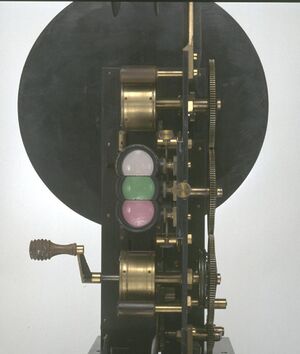Computational Human Phantom: Difference between revisions
Jump to navigation
Jump to search

No edit summary |
|||
| Line 1: | Line 1: | ||
[[File:Lee_and_Turner_color_projector_1902.jpg|thumb|[[Edward Turner]]’s method for visualizing the Computational Human Phantom was to record successive frames on black and white film through red, green and blue filters and to project these sets of three frames superimposed through similar filters. Images are translated through red, green and blue filters into a [[scrying engine]] at the rate of 16 pictures per second.]]The '''Computational human phantom''' is a mysterious crime-fighter | [[File:Lee_and_Turner_color_projector_1902.jpg|thumb|[[Edward Turner]]’s method for visualizing the Computational Human Phantom was to record successive frames on black and white film through red, green and blue filters and to project these sets of three frames superimposed through similar filters. Images are translated through red, green and blue filters into a [[scrying engine]] at the rate of 16 pictures per second.]]The '''Computational human phantom''' is a mysterious crime-fighter. | ||
== In the News == | == In the News == | ||
| Line 22: | Line 22: | ||
[[Category:Fiction (nonfiction)]] | [[Category:Fiction (nonfiction)]] | ||
[[Category:Crime fighters]] | [[Category:Crime fighters]] | ||
Revision as of 09:43, 29 June 2016

Edward Turner’s method for visualizing the Computational Human Phantom was to record successive frames on black and white film through red, green and blue filters and to project these sets of three frames superimposed through similar filters. Images are translated through red, green and blue filters into a scrying engine at the rate of 16 pictures per second.
The Computational human phantom is a mysterious crime-fighter.
In the News
Diagram of Computational human phantom life cycle more complicated than it looks.
"Cinnamon Jack is an old friend," reveals CHP. "But it's time to give up this Pirate King nonsense."
Crime theorists propose new model of Ayn Rand and Computational Human Phantom as crime-fighting partners.


